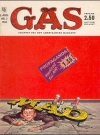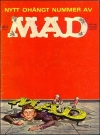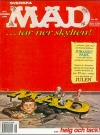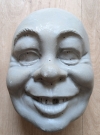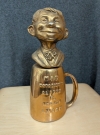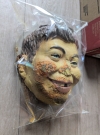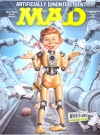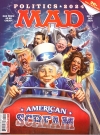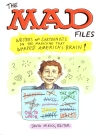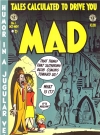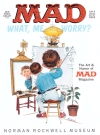If Countries Traded People Like Baseball Teams Do contains a superb Drucker spread of early 1960s political lovelies includes:
- Arturo Frondizi Ercoli, President of Argentina (1958 – 1962): later forced from office;
- For the United Arab Republic, Gamal Abdel Nasser, second President of Egypt;
- Emperor Hirohito of Japan, who reigned from 1926 to 1989, the longest of all Japanese emperors;
- For England, the Rt. Hon. Harold MacMillan, who eventually resigned due, in part, to the so-named Profumo affair;
- (unspecified, Denmark – appears not to be Viggo Kampmann);
- Alberto Lleras Camargo, acting President of Colombia (1945-46 and President 1958- 62);
- Josip Broz Tito, leader of Yugoslavia between the end of World War II and his death in 1980;
- Rómulo Betancourt "father of Venezuelan democracy" and President (1945-48 and 1959-64): survived an assassination attempt;
- (Francisco Paulino Hermenegildo Teódulo Franco y Bahamonde Salgado Pardo de Andrade) aka Generalisimo Franco, Head of State in Spain from 1936 until his death in 1975: "Caudillo de España por la gracia de Dios" (“The Leader of Spain by the grace of God” – yeah, right), following victory in the Spanish Civil War.
- It is unclear which representative for The Congo is portrayed: this was a troubled time, resulting in a string of government heads during 1960/61. Cyrille Adoula would have been premier at the time, but this could just as easily be Vice-Premier Gizenga, and also features Patrice Lumumba, whose name is parodied elsewhere in this article but who was assassinated at the end of 1961. Note the politically incorrect joke in the word balloon, etc.
- Charles Robberts Swart was the last Governor-General of the Union of South Africa and was chosen to be the Republic's first State President in 1961, until 1967.
- Sir Robert Menzies was the twelfth and longest-serving Prime Minister of Australia serving eighteen and a half years. His imperious manner and bushy eyebrows led to him being nicknamed "Ming" (as in Flash Gordon).
- The Italian representative is probably Amintore Fanfani, who was Prime Minister several times after 1960. From 1965 - 1966 Fanfani was President of the United Nations General Assembly.
- Friedrich Wahlen was President of the Swiss Confederation in 1961: perhaps one of Mort’s less fortunate caricatures!
- His Imperial Majesty Haile Selassie I was Emperor of Ethiopia from 1930–1936 and 1941–1974. He is the religious symbol for God incarnate among the Rastafari movement (although he was a devout Ethiopian Orthodox Christian his entire life.)
- David Ben Gurion led Israel during its War of Independence and became Prime Minister in 1948, largely remaining in place until he stepped down in 1963.
- Under Nationalist China, Chiang Kai-shek (1887 – 1975) was a Chinese military and political leader who assumed the leadership in 1925. He commanded the Northern Expedition to unify China against the warlords and emerged victorious in 1928 as the overall leader of the Republic of China. During the Chinese Civil War (1926–1949), Chiang attempted to eradicate the Chinese Communists but ultimately failed and retreated to Taiwan, where he continued serving as the President of the Republic of China for the remainder of his life.
- Konrad Adenauer (1876 – 1967) was a conservative German statesman, most noted for his role as West Germany's first chancellor from 1949-1963.
- Fidel Castro Ruz (b.1926) has ruled Cuba since 1959, when he overthrew Fulgencio Batista, and transformed Cuba into the first communist state in the Western Hemisphere. His leadership has been marked by tensions with the US, peaking in the Cuban Missile Crisis (1962), a volatile confrontation between the Soviet Union and the United States.
- Mao Tse-tung aka Mao Zedong aka Chairman Mao (1893 –1976) was Chairman of the Communist Party of China from 1943. Under his leadership, the Chinese Communist Party became the ruling party of mainland China as the result of its victory in the Chinese Civil War. On October 1, 1949, Mao declared the formation of the People's Republic of China..
- Nikita Sergeyevich (Khrushchof) Khrushchev (1894 –1971) was leader of the Soviet Union after the death of Joseph Stalin. He was First Secretary of the Communist Party of the Soviet Union from 1953 to 1964. He repeatedly disrupted a United Nations conference in 1960 by pounding his fists on the table and shouting in Russian. During 1960, Khrushchev twice interrupted a speech by British PM Macmillan (above) by removing his shoe as if to bang it on the table. Khrushchev once quoth in reference to capitalism, "We will bury you." All of these were seized upon with glee by MAD and others! Khrushchev's rivals deposed him In 1964, and he spent seven years under house arrest.
General Charles DeGaulle (1890 - 1970) was a French military leader and statesman, leader of Free France during WWII. Called to form a government in 1958, he inspired a new constitution and was the Fifth Republic's first president until 1969. His political ideology, known as Gaullism, left a major influence. France's largest airport, sited outside Paris bears the name Charles De Gaulle International Airport in his honour.
- Jawaharlal Nehru (often called ‘Pandit’, meaning Scholar or Teacher) was an important Indian leader who became the first Prime Minister when India won independence in 1947. India's longest-serving Prime Minister, Nehru sired a powerful political dynasty including daughter Indira Gandhi (Prime Minister from 1966 and grandson Rajiv Gandhi, PM from 1984 to 1989.
- In the tableau, the USA is represented by President John F. Kennedy, Lyndon Baines Johnson (LBJ, Vice President under JFK (1961-63) and later thirty-sixth President of the United States (1963 – 69); Adlai Ewing Stevenson II, U.S. ambassador to the United Nations, who was twice an unsuccessful candidate for President of the United States (1952 and 1956); and Eleanor Roosevelt (1884 – 1962), widow of President Franklin D. Roosevelt and human rights activist, journalist, author, diplomat, first-wave Feminist and active Civil Rights supporter – also active in the formation of the United Nations and chair of the committee that drafted and approved the Universal Declaration of Human Rights.
Editorial
- Cover Artist: Frank Kelly Freas
Cover Variations
Table of Contents
Mad Suggestions for Use of New Army Rocket Belt
Department: Forward Arch
Writer: Al Jaffee Artist: Bob Clarke
Mad's Do-It-Yourself Magazine Covers
Department: Beat 'Em to That Pulp
Artist: George Woodbridge Writer: Seymour V. "Sy" Reit
Advertising Space on Road Signs
Department: Commercial Vehicles Only
Artist: Bob Clarke Writer: Earle Doud
Celebrities' Wallets
Department: 8-Ball in the Side Pocketbook
Artist: George Woodbridge Writer: Arnold H. "Arnie" Kogen
Reader's Digress
Department: Condensed Milking
Artist: Joseph "Joe" Orlando Writer: Lawrence H. "Larry" Siegel
Mad's Physical Fitness Program
Department: Rally 'Round the Flab, Boys
Artist: Jack Rickard Writer: Dean Norman
If Countries Traded People Like Baseball Teams Do
Department: Barter-Up
Artist: Mort Drucker Writer: Gary Belkin
When TV Commercials Take Over Completely
Department: And Now a Word From Our Entertainer
Artist: Jack Rickard Writer: Seymour V. "Sy" Reit
A Day With J-F-K
Department: Big-Time Operetta
Artist: Mort Drucker Writer: Lawrence H. "Larry" Siegel
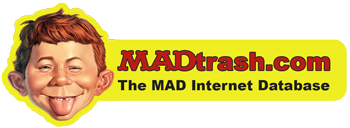

 MAD Magazine #67
MAD Magazine #67 
